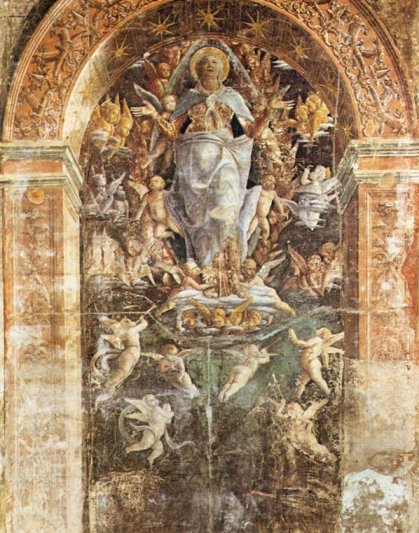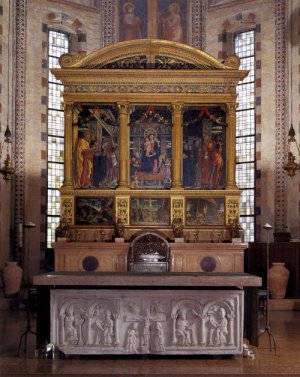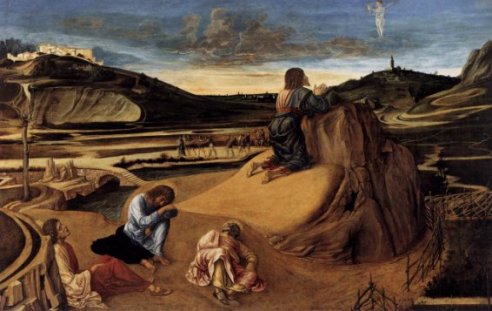|
Child angels 3 |
|
|
While Donatello was busy
working on the altar with musical angels in San Antonio in Padua, (1447
- 1450) just up the road the youthful Mantegna was hard at work on the
frescoes in the church of the Erimitani. (Sadly very badly damaged by
off-target bombing in world war two.) These were begun in 1448. The art critic Giovanni Agosti is uncompromising: 'The style of Mantegna is born from the desire to translate the sculptures of Donatello into painting' (Mantegna, 2008). The altarpiece that Donatello was working on in San Antonio was visible, and in addition it is suggested by Martha Levine Dunkelmann * that Mantegna may have had access to Donatello's workshop, which may well have had drawings of the master's work in Florence. Ms Dunkelmann compares the work in the Erimatani with the work of Donatello - figures, their poses, drapery and so on - but does not have a great deal to say about the spiritelli, our concern here. Here is a detail from Mantegna's Assumption of the Virgin from the Erimitani. |
|
 |
|
|
An important work by Mantegna that came a little later, 1457-60, is the San Zeno altarpiece in Verona. It is suggested that this is modelled on the altarpiece in San Antonio, although that has been modified since. Note in particular the use of musical angels, unknown on altarpieces before Donatello amd Mantegna. |
|
 |
 |
|
But were these musical figures really angels? Let's head for the National Gallery in London, abd see two wonderful paintings side by side. Here are two versions of the Agony in the Garden, by Mantegna (left) (1459) and Giovanni Bellini (right) (1465). Mantegna was a close associate and powerful influence on Bellini, no more so than here. The paintings illustrate these words from the Gospel of Luke: And there appeared an angel unto him from heaven, strengthening him. And being in an agony he prayed more earnestly: and his sweat was as it were great drops of blood falling down to the ground. (Ch 22 v 43-44). |
|
 |
 |
|
|
|
| Here is a detail from Bellini's picture. Child angels had arrived. | |
 |
|
|
It is an exageration to suggest that
Mantegna was the first painter to include the spiritelli. but, like
Donatello, he turned them from those sterotype sarcophagi images into
something quite new - best described as angels. * Donatello's influence on Mantegna's early narrative scenes. Art Bulletin, V62 No 2, Jun 1980. |
|
|
Angels page 1 |
|
|
|
|